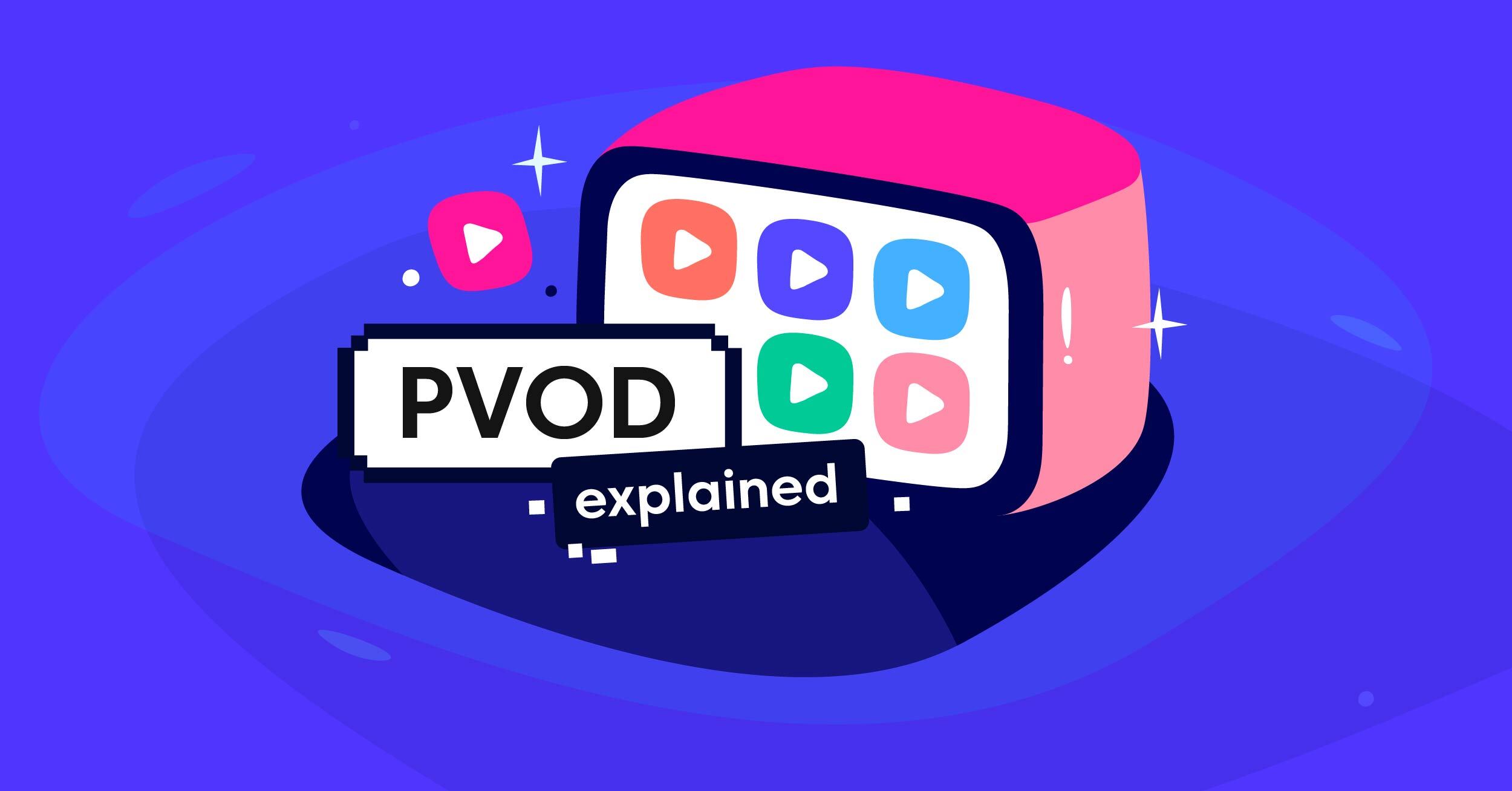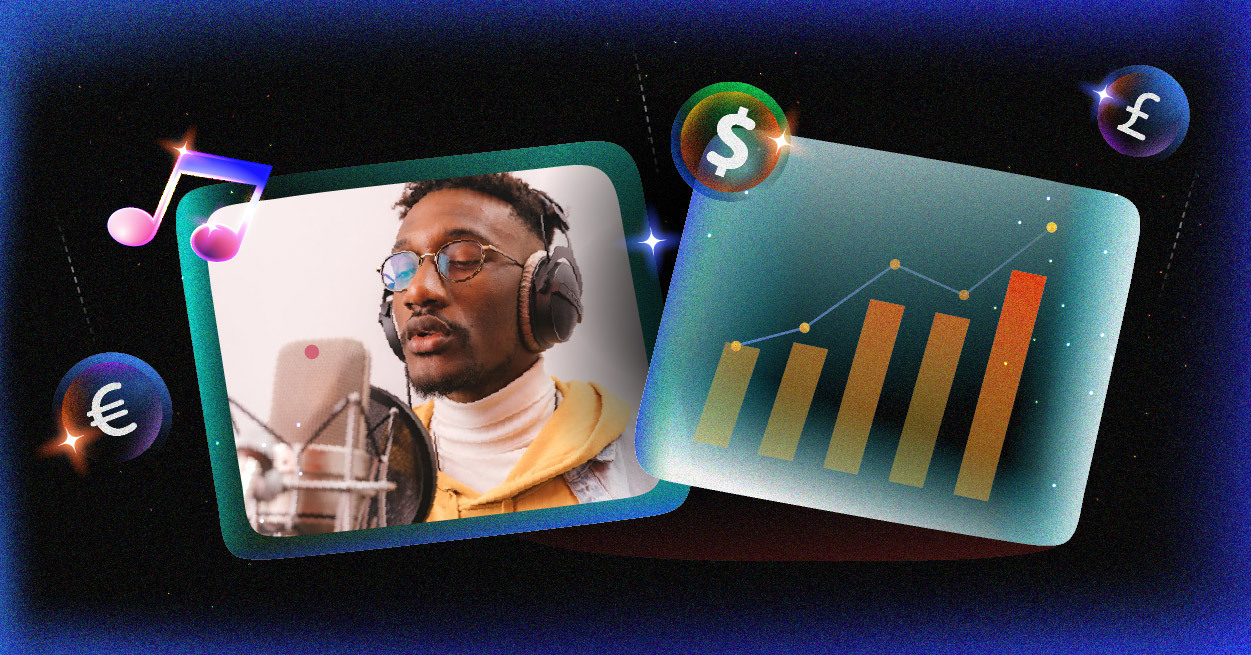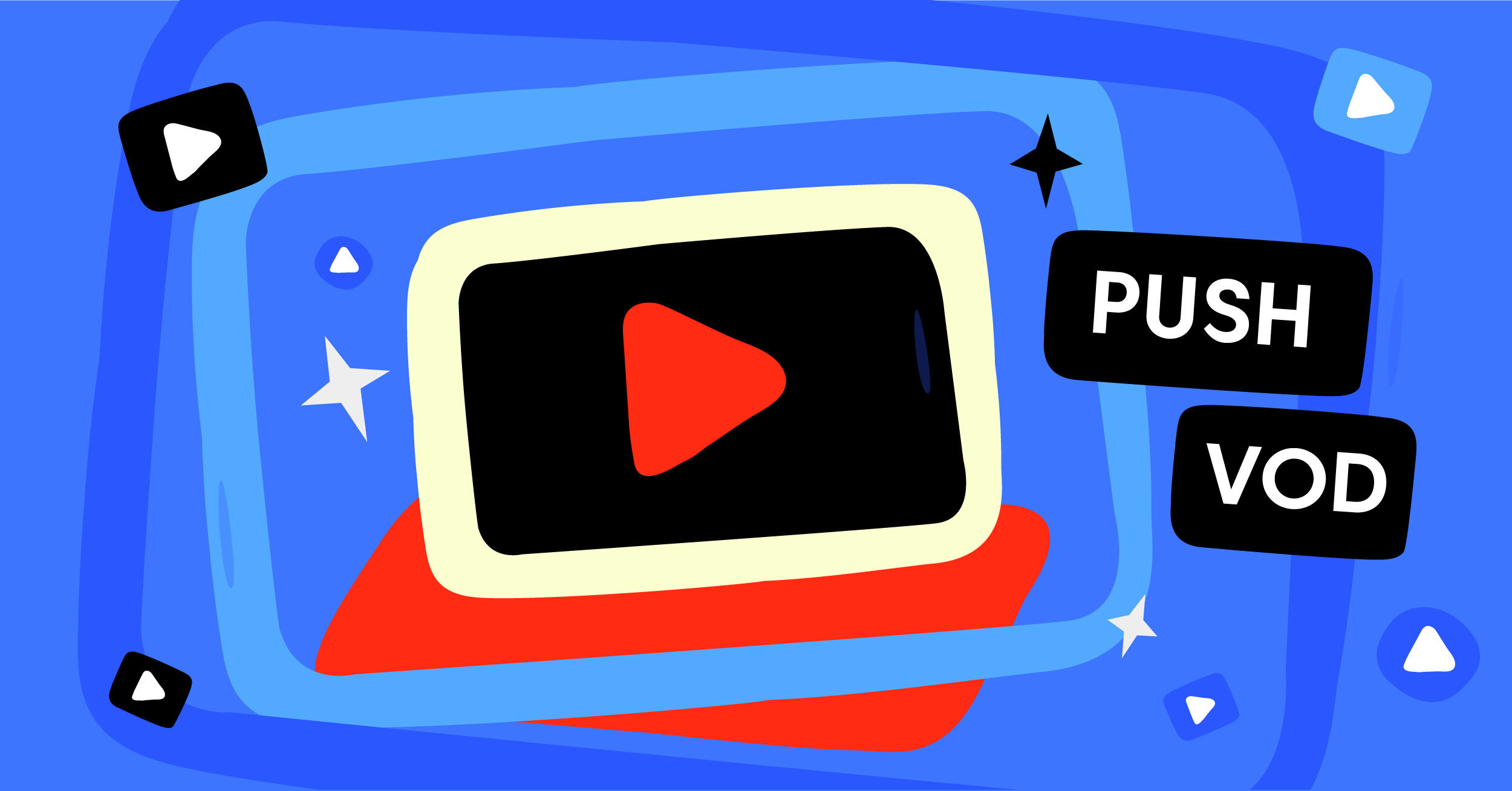The global Video on Demand (VOD) market will reach $399.05 billion by 2032. Premium Video on Demand (PVOD) has revolutionized visual media distribution. This model offers earlier access to newly released content at a premium price. Traditional video content distribution often frustrates viewers. PVOD solves these issues by bringing premium content directly to homes.
The COVID-19 pandemic accelerated PVOD adoption. The pandemic reshaped the film industry’s release strategies. Major studios now embrace this monetization model for significant revenue potential.
In this article, we will explore how PVOD works and examine its benefits for creators and consumers. We’ll also explore its impact on the streaming landscape. Let’s discover why PVOD is becoming a game-changer in the entertainment world.
What is Premium Video on Demand (PVOD)?
PVOD stands for Premium Video on Demand.

This service differs from traditional Video on Demand in providing exclusive content shortly after theatrical releases. PVOD operates as the premier tier of Transactional Video on Demand (TVOD), utilizing the pay-per-view model. Users pay a premium fee to watch high-budget films before they become widely available. The revenue model allows film studios to monetize content directly through streaming services. Simultaneous releases in theaters and on OTT platforms have become increasingly common with PVOD. This approach enables viewers to choose between the cinema experience and at-home viewing.
PVOD has gained significant popularity, especially during periods when theatrical releases were limited. The model offers an additional revenue stream for the film industry while providing audiences with early access to premium content. PVOD’s flexibility appeals to customers who prefer watching new movies from the comfort of their homes.
How PVOD Streaming Works
PVOD relies on advanced streaming technology to deliver premium video content directly to viewers. The process begins with content providers uploading their new releases to a secure cloud-based platform. This platform encodes the videos into various formats for compatibility across devices.
When customers purchase PVOD videos, the streaming service authenticates their access rights. The platform then uses adaptive bitrate streaming to adjust video quality based on internet speed. This ensures smooth playback without buffering issues.
Content delivery networks (CDNs) distribute streaming content globally, reducing viewers’ latency. Digital rights management (DRM) systems protect PVOD releases from unauthorized access and piracy.
The PVOD model often integrates with existing streaming platforms. It allows seamless access for subscribers. Users can browse, purchase, and watch premium VOD content within the same interface.
Payment processing systems handle secure transactions for one-time fees or rentals. Analytics tools track viewer behavior and preferences, helping platforms optimize their PVOD offerings.
Some services use blockchain technology to manage rights and royalties for PVOD content. This ensures transparent and efficient monetization for content creators and distributors.
PVOD combines streaming technology, security measures, and user-friendly interfaces to deliver premium large budget content directly to audiences.
Advantages of PVOD for Creators and Consumers
The PVOD streaming model is beneficial for both creators and consumers. Let’s explore the benefits separately:
Benefits of PVOD for Creators:
• Increased Revenue Potential
The PVOD model offers creators a new avenue for monetization. Premium video content can generate significant revenue through direct sales to viewers. This approach allows creators to bypass traditional distribution channels and reach audiences directly. By setting premium prices for new releases, creators can maximize profits from highly anticipated content.
The PVOD model also enables creators to capture revenue that might have been lost to piracy or delayed viewing. This direct-to-consumer approach can be particularly lucrative for high-budget productions.
• Wider Audience Reach
PVOD releases can reach a broader audience than traditional releases. Streaming platforms have a global reach. They allow creators to distribute their content to viewers worldwide simultaneously. This expanded audience base can lead to increased exposure and fan engagement for creators and their work.
The convenience of PVOD also attracts viewers who might not typically visit theaters, expanding the potential market for premium content. By leveraging streaming technology, creators can tap into new demographics and markets that were previously difficult to access through traditional distribution methods.
• Flexibility in Release Strategies
The PVOD model provides creators with more flexibility in their release strategies. They can choose to release content exclusively through PVOD, combine it with a limited theatrical release, or use it as a follow-up to a traditional theatrical run. This flexibility allows creators to tailor their distribution approach based on the specific needs of each project.
Creators can also experiment with different pricing models and release windows to optimize revenue and audience engagement. The ability to adjust strategies quickly based on viewer response and market conditions is a significant advantage of the PVOD model.
• Data-Driven Insights
PVOD platforms offer creators access to valuable viewer data and analytics. This information can provide insights into audience preferences, viewing habits, and engagement levels. Creators can use this data to inform future content creation decisions and marketing strategies.
Understanding viewer behavior on streaming platforms can help creators tailor their content to meet audience demands more effectively. The data-driven approach enabled by PVOD can lead to more targeted and successful content production and distribution strategies.
• Reduced Distribution Costs
The PVOD model can significantly reduce creators’ distribution costs. Traditional releases involve substantial expenses for physical prints, shipping, and marketing across multiple locations. With PVOD, these costs are largely eliminated as content is distributed digitally.
The savings on distribution can be reinvested into content production or marketing efforts. Additionally, PVOD’s digital nature allows for easier updates and modifications to content if needed without the logistical challenges of recalling physical copies.
• Control Over Content Presentation
PVOD gives creators more control over how their content is presented to audiences. They can ensure that viewers experience the content as intended, without the variables of different theater environments.
Creators can include additional features, such as behind-the-scenes content or director’s commentary, enhancing the viewer experience. This control extends to the timing of releases and the duration of availability, allowing creators to manage their content’s lifecycle more effectively.
PVOD’s direct-to-consumer nature also reduces the influence of intermediaries on content presentation and marketing.
Benefits of PVOD for Consumers:
• Early Access to New Releases
PVOD allows viewers to watch new movie releases from the comfort of their homes. This early access is particularly appealing for highly anticipated films that require a theater visit. Consumers can enjoy premium content without waiting to become available on traditional streaming services.
The immediacy of PVOD releases satisfies the demand for instant gratification in content consumption. This benefit is especially valuable for viewers who are unable or unwilling to visit theaters but still want to stay current with new releases.
• Convenience and Comfort of Home Viewing
The ability to watch premium VOD content at home provides unparalleled convenience for consumers. Viewers can enjoy new releases without the hassle of traveling to a theater, finding parking, or dealing with crowds. The home environment allows for a more relaxed and personalized viewing experience.
Consumers can pause, rewind, or rewatch content at their leisure, enhancing their enjoyment of the film. This convenience particularly appeals to families with young children or individuals with mobility issues.
• Potential Cost Savings for Groups
PVOD can offer significant cost savings for families or groups compared to theater visits. While the price of a PVOD release is higher than standard streaming rentals, it is often less than the combined cost of multiple theater tickets. Additional savings come from avoiding expenses like transportation, parking, and concessions associated with theater outings.
The ability to share the viewing experience with a larger group at home can make premium content more accessible and affordable. This cost-effectiveness is particularly appealing for households with multiple viewers.
• Flexible Viewing Options
PVOD platforms typically allow viewers to pause, rewind, or rewatch content as desired. This flexibility enhances the viewing experience, allowing consumers to catch missed details or revisit favorite scenes.
Some viewers find it more convenient to spread out the viewing of longer films over multiple sessions. Additionally, the ability to rewatch content within the rental period provides better value for money compared to a single theater viewing. This flexibility caters to different viewing preferences and schedules.
• Access to Exclusive Content
Many PVOD releases feature exclusive content that is not available in cinema premieres. This can include extended cuts, behind-the-scenes footage, or director’s commentary. Access to this additional material enhances the overall value proposition for consumers.
Exclusive content can deepen engagement with the film and its creators, appealing to dedicated fans. The exclusivity of PVOD releases can also create a sense of prestige and excitement around the viewing experience.
• Enhanced Privacy and Customization
Watching PVOD releases at home offers privacy and customization impossible in public theaters. Viewers can control their environment, adjusting factors like volume, lighting, and seating to their preferences. This personalized experience can particularly appeal to those who find theater environments distracting or uncomfortable.
The privacy of home viewing also allows for more open reactions and discussions during the film. Consumers can tailor their viewing setup to maximize their enjoyment of premium content.
VOD vs. PVOD
VOD (Video on Demand) offers free or subscription-based access. PVOD (Premium VOD) charges higher early or exclusive content access fees.
VOD allows users to stream content whenever they want. It usually requires a subscription or shows ads. Netflix and Hulu are popular VOD services. PVOD is a premium version of VOD. It charges extra for early or exclusive content access. PVOD is often used for movies before they hit general streaming. Examples include Apple TV and Amazon Prime’s premium movie rentals. VOD provides a wide catalog for a set price. PVOD focuses on new releases for an extra fee.
PVOD vs. TVOD
PVOD charges viewers for each video rental, while TVOD allows users to buy or rent content. PVOD focuses on premium releases, while TVOD offers broader choices.
PVOD stands for Premium Video on Demand. It targets recent movie releases and special events. Viewers pay a high fee for short-term access. TVOD stands for Transactional Video on Demand. It lets users purchase or rent content. This model covers various genres and older titles. PVOD usually offers exclusive content. TVOD gives users more flexibility. Users can choose between buying or renting. PVOD often generates higher revenue per view. TVOD attracts a wider audience with diverse options. Both video monetization models cater to different viewer preferences and monetization strategies.
PVOD vs. SVOD
PVOD charges viewers per title, while SVOD offers unlimited access for a monthly fee. PVOD suits one-time views, while SVOD builds subscriber loyalty.

PVOD stands for Premium Video on Demand. It allows users to pay for individual titles. This model targets viewers who want specific content. SVOD means Subscription Video on Demand. Users pay a monthly fee for access to a library of content. This model encourages binge-watching and long-term subscriptions. PVOD is great for new releases and special events. SVOD attracts users with a vast selection and original programming. Both models cater to different viewer preferences and spending habits. Content providers can choose the best model based on their audience.
How PVOD Impacts the Media Industry
PVOD has significantly altered revenue streams for studios and distributors. This model offers a new monetization option for premium, large-budget content. Studios can now release movies directly to audiences, bypassing traditional cinema premieres.
Digital platforms enable wider audience reach for PVOD content. Viewers pay for early access to new releases from the comfort of their homes. This approach caters to customers who prefer watching at home over theater visits.
The PVOD model presents both challenges and opportunities for creators. On one hand, it allows for more creative freedom and direct audience engagement. Creators can feature exclusively on streaming platforms, potentially reaching new subscribers.
However, PVOD differs from the traditional model in terms of revenue generation. Box office success metrics may not apply to PVOD releases. Creators must adapt to new pricing models and audience expectations.
The streaming industry now offers various monetization options, including PVOD, SVOD, and ad-supported models. This diversity allows for flexible business strategies. Studios can choose between theatrical releases, PVOD, or both.
As streaming technology evolves, PVOD’s impact on the industry grows. It remains a significant joining of traditional cinema and modern streaming practices.
Get Started With PVOD on Castr
PVOD streaming represents a significant shift in how we consume new movie releases. This model offers viewers early access to premium content while providing studios a new revenue stream. PVOD’s potential to transform the entertainment industry is substantial, offering flexibility and convenience to audiences worldwide.

Exploring PVOD options can enhance your movie-watching experience as a viewer. For content creators, PVOD presents an opportunity to reach audiences directly and maximize revenue. Platforms like Castr enable creators to leverage PVOD technology effectively, offering tools to stream and monetize content.
Whether you’re a viewer or content creator, PVOD is reshaping the streaming landscape. To experience the benefits of PVOD and other streaming solutions, consider trying Castr. We provide comprehensive tools for all types of streaming, including PVOD, empowering creators to share their content with the world.









